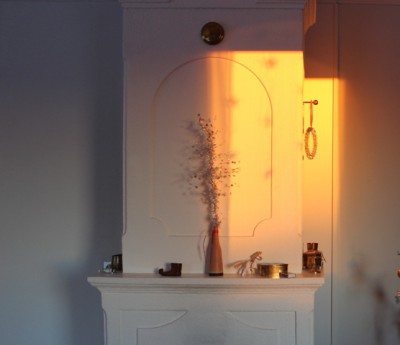Disconnected from the forces of nature, we approximate the experience of light and heat in our cities, adjusting the sun’s clock to our own convenience, and ignoring it when it doesn’t suit us. Up here on the tilting top part of the world it’s harder to do this. That sun does odd things. Like come up and go down in a very small area (south). And in a few weeks’ time, not come up at all. You can’t ignore it; these things are an event.
In towns it’s often hard to see where the sun comes up and goes down because there’s usually a lot of buildings in the way. Kiruna is small, and surrounded by empty land, so you’re always aware where the sun is, in the very short period it makes an appearance.
Even indoors, we know. Our living room functions like Stonehenge in England, Callanish and Stenness in Scotland, Karnak in Egypt and Machu Picchu in Peru. It marks the movement of the spheres by indicating when the sun reaches particular points in the year.
In our case it marks the time when the sun is about to disappear (now), and later the time just after it has reappeared (early January). During these short periods of a couple of weeks each, a swathe of warm low sunlight shoots up at us through our living room window, directly onto our ‘kakelugn’. We have no television, and we tend to orientate ourselves to the ‘kakelugn’, a tall square white chimney, from which all warmth flows when we get it going with a good fire. When the sun hits it the whole structure glows, like an ancient stone (I like to think).
Sun worship, now there’s a thing to take us into the heart of winter.


